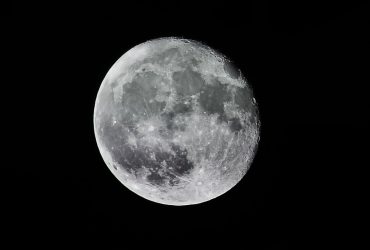Dobsonian Vs Newtonian: What’s The Difference?
So you’ve decided to get yourself a brand new telescope huh? Well, whether it’s your first one or you’re replacing an old model, you’re in for quite a ride. We’ve really come a long way from those small, extendable hand-held telescopes that sailors used to carry.
Today, there’s a limitless collection of all types and sizes of telescopes. So the real question now becomes, which telescope do I buy? How do I know which one is the best for my needs? Well, one of the best ways to get the perfect telescope is by looking at some of the leading models in the market. And that’s just what we’re going o do. Here’s a look at the Dobsonian telescope vs the Newtonian telescope.
Dobsonian vs Newtonian
It may come as a surprise, but there’s no difference between these two in terms of the telescope itself. See, a Dobsonian is simply a Newtonian telescope mounted on a cheap, easy to build Dobsonian mount that can be made at home.
So technically, a Dobsonian is a type of mount known as an altazimuth with larger ball bearings and no locks or slow motion controls. Any type of telescope can be used with Dobsonian mounts, but they work best with Newtonian reflectors. However, the difference comes in the purpose or intended use.
Dobsonian
The design of Dobsonian telescopes is more optimised for the observation of faint, deep sky bodies such as galaxies and nebulae. In geek speak, we call Dobsonians light buckets since they can operate at a lower magnification. These types are very popular for amateur astronomers. But today, the term Dobsonian is used to refer to large aperture Newtonians that used basic Dobson characteristics.
These Dobsonian characteristics include thin mirrors, using paper tubes instead of aluminium or fibreglass tubes, and plywood boxes for the housing and base. And last but not least, there’s the simple altazimuth mount. What’s special about Dobsonian telescopes is that the design allows even builders with minimal skill to make a very large telescope from simple, common items and objects.
Newtonian telescopes
Newtonian telescopes on the other hand are the good, old classic reflectors invented by Isaac Newton. They make use of concave primary mirrors and flat diagonal secondary mirrors to view distant objects that are not terrestrial. The great thing about Newtonian telescopes is that they are absolutely free of the chromatic aberration that you find in other telescopes, especially refracting ones.
And if we compare them to other types, the Newtonian is also far les expensive even with bigger apertures. That’s because overall fabrication is much simpler than other designs since there’s only one surface that needs grounding and polishing. Newtonians also offer a wider field of view thanks to the short focal ratio. Once that combines with the eyepiece at the top end of the telescope, then you’ve got even more portability.
But even with all these strong points, Newtonian telescopes still have their weaknesses. For instance, they suffer from the Achilles heel of all reflecting telescopes that use parabolic mirrors. And that’s coma – an off axis aberration that makes all images seem to flare inward towards the optical axis.
Likewise, Newtonian telescopes don’t do so well with transport and handling. Too much manhandling and the primary and secondary mirrors get out of alignment from the shock. So chances are that you may need to do some realignment every single time you set up.
Verdict
When all is said and done, we can say that Dobsonian is just a type of mount while Newtonian actually refers to the configuration and optics inside a telescope. But due to the Newt’s ideal location of the eyepiece, almost all Dobsonian telescopes are actually Newtonian. Dobsonian mounts a great for larger and heavier scopes because not only do they offer a more stable base, they also allow for easier or smoother motion.
This mount is likely an altazimuth which just means is can go up, down, left and right – perfect if your aim is to look around with your telescope. Either way, both Dobsonian and Newtonian telescopes still remain extremely popular with amateur astronomers. But if your purpose is to turn from a novice to a professional telescope maker, then you might want to go with the Dobsonian.



